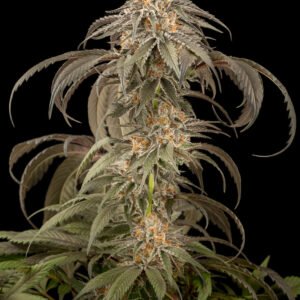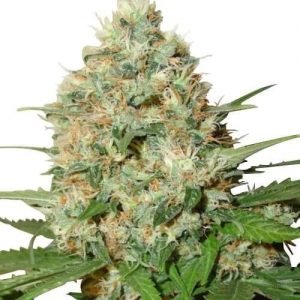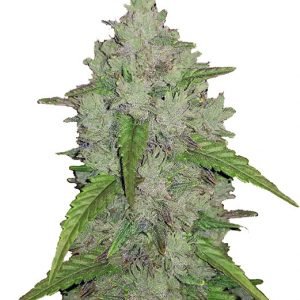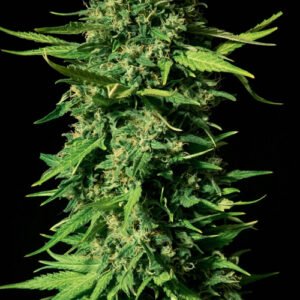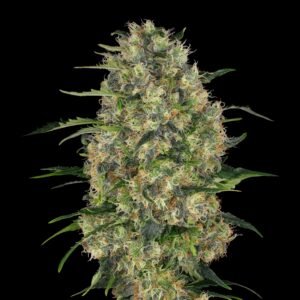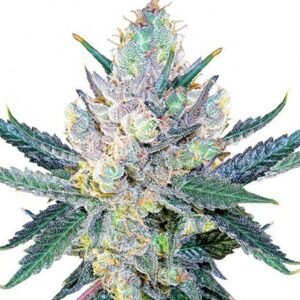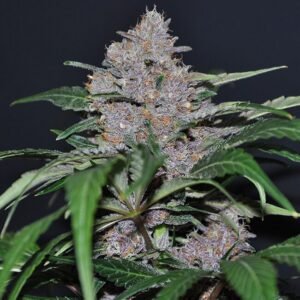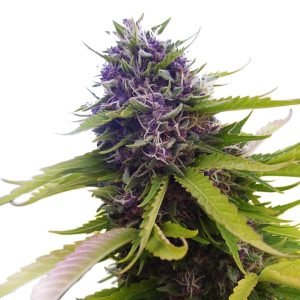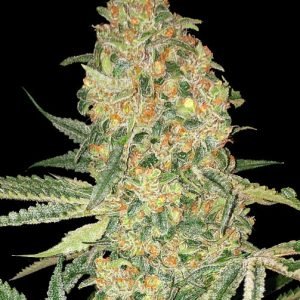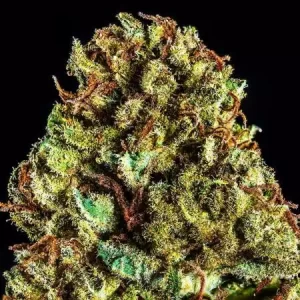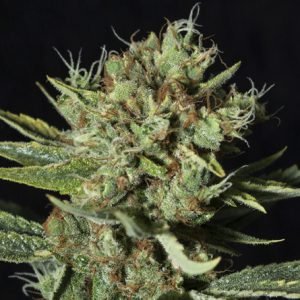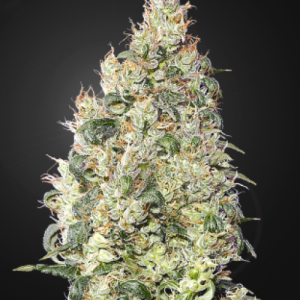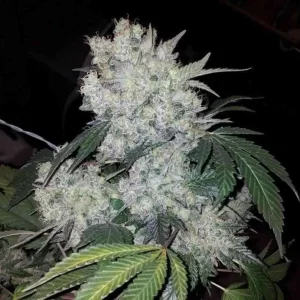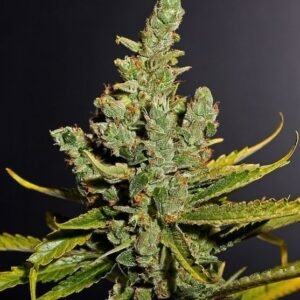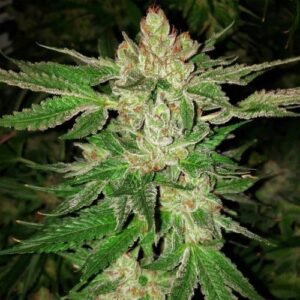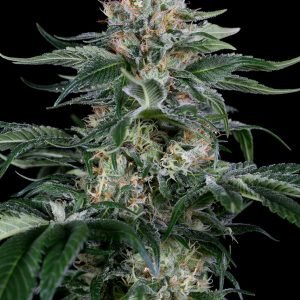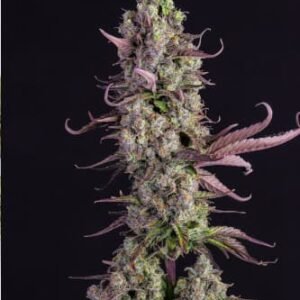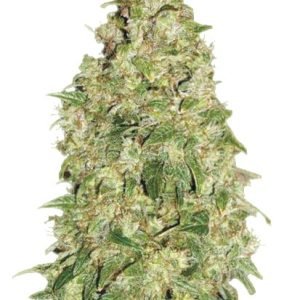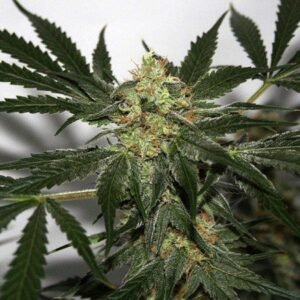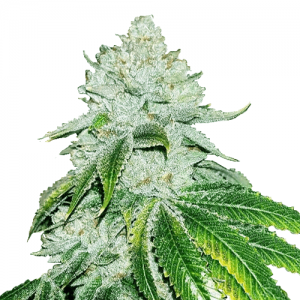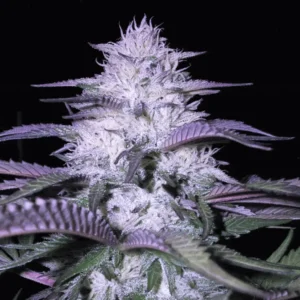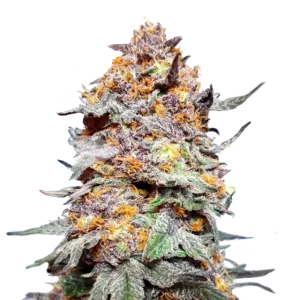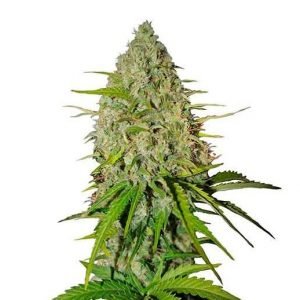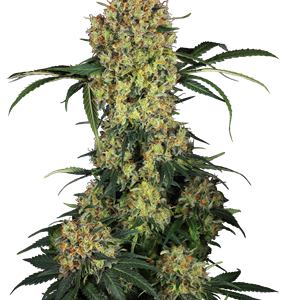
The War on Drugs Leave a comment
The WAR on drugs
Over four decades ago, US President Richard Nixon made a bold declaration, labeling drug abuse as the primary enemy of the public and initiating an unparalleled worldwide endeavor known as the War on Drugs. Presently, the evidence speaks for itself. The War on Drugs has proven to be a monumental failure, resulting in detrimental and unintended outcomes. It has fueled rampant mass incarceration within the United States, while also fostering corruption, political upheaval, and widespread violence in Latin America, Asia, and Africa. The consequences of the War on Drugs have extended to systemic human rights abuses worldwide, casting a dark shadow over the lives of millions of individuals. Astonishingly, as we continue to pour billions of dollars into this endeavor each year, the unintended result has been the creation and empowerment of powerful drug cartels. Meanwhile, the original goal of achieving a drug-free world appears more elusive than ever. How did we find ourselves in this situation?

Why it doesn't work
The fundamental principle driving the War on Drugs is the notion of “no drugs, no problems.” Consequently, the majority of efforts over the past few decades have been concentrated on eradicating drug supplies and imprisoning drug traffickers. However, this approach overlooks a basic economic principle: the interplay of supply and demand. When the supply of a commodity is reduced without addressing the underlying demand, the consequences can be problematic.
When the price of a commodity increases, it typically leads to decreased sales for various products. However, drugs operate differently in the market. The drug market exhibits low price-sensitivity, as drugs continue to be consumed regardless of their cost. Consequently, this dynamic fosters the growth of drug production and the recruitment of more traffickers, ultimately resulting in an increased availability of drugs. This phenomenon is commonly referred to as the “balloon effect,” wherein even if drug production or a significant supply route is disrupted or destroyed, the overall supply for end-users remains largely unaffected.
An excellent illustration of this phenomenon is crystal methamphetamine, commonly known as crystal meth. In an attempt to curb its production, the US Government implemented strict regulations on the sale of chemicals used in the drug’s manufacturing process. While this approach did succeed in shutting down large-scale meth producers, it unintentionally gave rise to thousands of small-scale operations throughout the country, predominantly in small towns and rural communities. In response to this situation, certain US states attempted to address the issue of domestically produced meth by imposing further regulations on additional chemicals. As a result, there was a significant decline in small-scale meth production. However, despite these efforts, the overall supply of meth remained unchanged. Exploiting the opportunity, Mexican drug cartels swiftly stepped in and established large-scale production operations. Surprisingly, the quality of their meth surpassed the previous standards, making it even more potent than before. Furthermore, the involvement of Mexican drug cartels brought a wealth of experience in smuggling operations. Consequently, all the aforementioned efforts unintentionally resulted in a more professionalized production of meth, leading to an even more potent drug, without any significant reduction in supply. It becomes evident that attempting to win the war on drugs solely through supply-side measures is a futile endeavor.
Despite drugs being widely accessible, demand remaining unaltered, and some drugs becoming purer than before, the budget of approximately $30 billion allocated to the US Drug Enforcement Agency has yielded an efficiency rate of less than 1% in halting the influx of drugs into and within the United States.
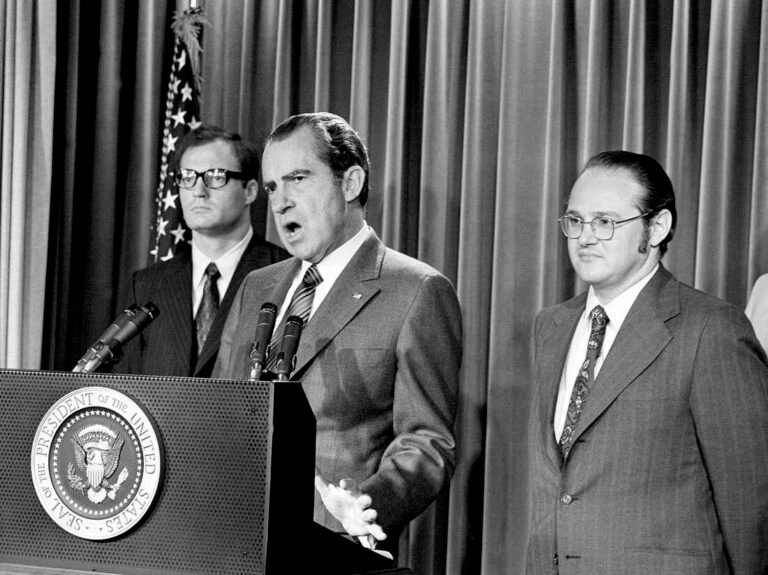
The bill
It is perplexing to consider how a country possessing cutting-edge technology, military intelligence, and global influence could spend billions upon billions of dollars in attempts to dismantle gangs and drug smuggling networks in developing nations. Investigative work by the Associated Press uncovered a troubling pattern: government budgets were augmented for programs that proved to be ineffective in curbing the inflow of drugs into the country. Over the past four decades, the allocated funds have been dispersed in various directions, yielding questionable outcomes.
- Approximately $33 billion was allocated to domestic marketing initiatives, including Nancy Reagan’s “Just Say No” campaign. While this campaign did contribute to a decline in teenage drug use rates, it faced criticism for oversimplifying a complex public health crisis into a mere slogan.
- $20 billion was dedicated to combating drug cartels on their own territory. Out of this amount, $6 billion was spent on dismantling operations in Colombia. However, this strategy prompted a shift in trafficking activities to Mexico, resulting in the Mexican government’s struggle to control the powerful organized crime syndicates within its borders. Ciudad Juarez, once dubbed the “murder capital of the world,” experienced the devastating consequences, with drug cartels engaged in a violent struggle for power and dominance, leading to the deaths of approximately 2,600 people in 2009 alone.
- $49 billion was allocated to support law enforcement and border control missions along the southern border, covering a span of nearly 2,000 miles from California to Texas. These funds were utilized for various purposes, including the provision of resources such as patrols, sniffer dogs, checkpoints, cameras, motion detectors, heat sensors, drone aircraft, as well as the construction of over 1,000 miles of steel beam, concrete walls, and heavy mesh along the border. However, despite these efforts, the unfortunate reality remains that the majority of the 330 tons of cocaine, 20 tons of heroin, and 110 tons of methamphetamine consumed by 25 million Americans each year are still smuggled over the Mexican border.
- $121 billion was dedicated to the arrest of over 37 million individuals involved in low-level, nonviolent drug offenses. Additionally, a staggering $450 billion was expended on processing these offenders within federal prisons. Despite The Washington Post highlighting the misguided approach of incarcerating drug users, which overlooks the reality of drug addiction within prison walls, hundreds of billions of dollars have been allocated to sustain these endeavors in the failed war on drugs.
For numerous young individuals worldwide, acquiring illegal drugs is just as accessible as obtaining alcohol. However, the consequences extend beyond this aspect. Prohibition measures may deter some individuals from using drugs, but in the process, they inflict significant harm on society as a whole. Many of the issues commonly associated with drug use are, in fact, a byproduct of the war waged against them. One notable consequence of prohibition is the amplification of drug potency.
When drugs can be stored in small quantities yet retain high potency, it becomes more lucrative for sellers. This phenomenon mirrors what occurred during alcohol prohibition, which resulted in an upsurge in the consumption of strong liquor rather than beer. The prohibition of drugs has also been associated with a rise in violence and homicides on a global scale. Gangs and cartels, lacking access to legal avenues for conflict resolution, resort to violence as a means to settle disputes. This grim reality has triggered a distressing cycle of escalating brutality. Shockingly, according to certain estimates, the homicide rate in the United States is believed to be 25-75% higher as a direct consequence of the War on Drugs. In Mexico, the nation at the forefront of the drug war, a staggering estimate reveals that approximately 164,000 individuals lost their lives to violence between 2007 and 2014. Shockingly, this number surpasses the combined casualties of the war zones in Afghanistan and Iraq during the same period.


One of the most detrimental impacts of the War on Drugs is the imprisonment of non-violent drug offenders. A prime example of this can be seen in the United States, a major proponent of the war. Despite having only 5% of the global population, the US accounts for a staggering 25% of the world’s prison population. Harsh penalties and mandatory minimum sentences contribute significantly to this disparity. Regrettably, minority communities bear a disproportionate burden as a result of these policies.
Is there a solution?
During the 1980s, Switzerland faced a severe public health crisis stemming from widespread heroin use. The surge in heroin addiction led to skyrocketing HIV rates and an increase in street crime. In response, Swiss authorities adopted a novel approach: harm reduction. They established free heroin maintenance centers, providing addicts with treatment and stabilization services.
In these specialized centers, individuals were provided with high-quality heroin at no cost. Additionally, they were supplied with clean needles and granted access to safe injection rooms equipped with showers, beds, and medical supervision. Social workers were also available to assist them in finding housing and addressing other challenges they faced in their lives. The outcomes were remarkable, with a significant reduction in drug-related criminal activities observed. Moreover, two-thirds of the individuals utilizing these centers were able to secure steady employment since they could now concentrate on their recovery instead of financing their addiction. Presently, more than 70% of all heroin addicts in Switzerland receive treatment through these programs. Notably, there has been a drastic decline in HIV infections as a direct result of these measures. Heroin overdose fatalities have plummeted by 50%, showcasing the effectiveness of alternative approaches. Additionally, drug-related street sex work and crime have experienced significant reductions. These methods not only prove to be more cost-effective but also yield tangible results, unlike the counterproductive consequences of drug prohibition. The current system of prohibition tramples upon human rights, drains enormous financial resources, and engenders substantial human suffering, all in the pursuit of an unattainable objective. After four decades of relentless battle, the time has come to bring an end to the War on Drugs and transition towards a more progressive and effective approach. It is time to embrace alternative strategies that offer greater promise and yield better outcomes.
Cannabis Prohibition
The story of Cannabis prohibition is intricate, as various categorizations of Cannabis and cultural beliefs have influenced the legislation surrounding it over the course of history.
1900's

1937
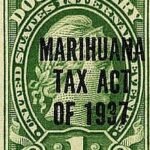
1951-1956

1970
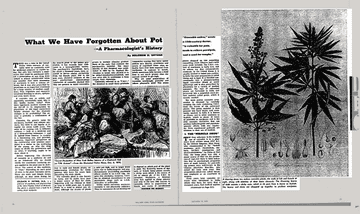
1980's
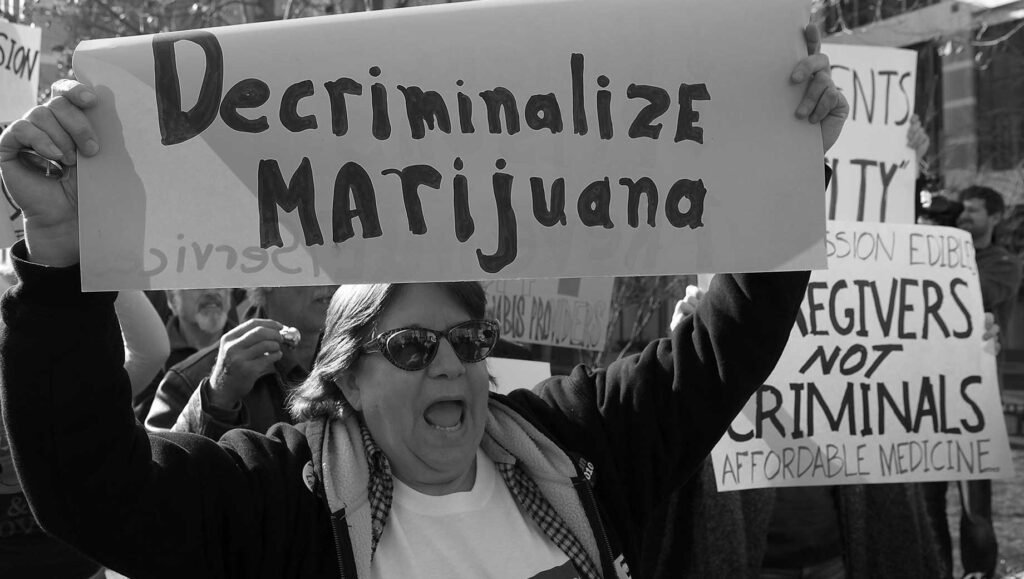
The recreational utilization of marijuana was introduced
In the early 1900s, Mexican immigrants introduced recreational marijuana use in the United States, marking one of the initial instances of its occurrence.
Federal Regulations
The enactment of the Marijuana Tax Act establishes federal prohibition of marijuana while still allowing for medicinal use. (Around the same time as Alcohol Prohibition)
Criminalization
The Boggs Act (1952) and Narcotics Control Act (1956) are passed, imposing mandatory sentences for drug-related offenses, including the possession of marijuana.
The implementation of the Controlled Substances Act categorizes cannabis as a Schedule 1 drug, alongside substances like heroin. This classification denotes its perceived high potential for abuse and lack of acknowledged medical benefits. (A first offence Marijuana possession conviction resulted in a minimum sentence of 2-10 years with a fine up to $20,000.)
Decriminalization
During the 1970s, several states initiated the process of decriminalizing marijuana. By the 1980s, although the possession of marijuana remained illegal, individuals were no longer at risk of prosecution or imprisonment for specific quantities.
Australia TODAY
In February 2016, Australia legalised medicinal cannabis at the federal level and from January 2020, the Australia Capital Territory stated it was now legal to possess small amounts of cannabis for personal use (even though this conflicted with the federal laws). Now, over 21 countries worldwide have began to decriminalise cannabis.
Afghan Kush Feminized
10% Sativa, 90% Indica | THC 21% | Afghan Kush is an Indica cannabis strain originating from the renowned Hindu Kush mountain range, which stretches along the Afghan-Pakistan border. It is celebrated for its quintessential indica characteristics, producing large, resinous buds that deliver the classic body stone effect cherished by many users.
——————————————————————————
Is it legal to buy Cannabis seeds in Australia?
How can I buy Cannabis seeds in Australia?
AK-47 Feminized
Ak-47 was orginally created by the Netherland’s Serious Seeds in 1992 and has won 16 awards including the High Times Cannabis Cup. People love this strain around the world for its high THC content, strong flavour and high energy effects.
——————————————————————————
Is it legal to buy Cannabis seeds in Australia?
How can I buy Cannabis seeds in Australia?
Amnesia Haze Feminized
10% Indica – 90% Sativa | THC 21-25% | This is THE legit Dutch classic Sativa dominent powerhouse that is the proud winner of multiple Cannabis cups. This uplifter has a lemony, incense and cederwood flavour. Amnesia has a slightly longer growth phase overall, but this translates into massive yields and is well worth your attention for a truly supreme quality end product that is sure to please those aiming for a happy and uplifting high.
——————————————————————————
Is it legal to buy Cannabis seeds in Australia?
How can I buy Cannabis seeds in Australia?
Amnesia Platinum Feminized
70% Sativa, 30% Indica | THC 16 – 20% | The Original Amnesia Platinum was developed by a Dutch breeder who combined a renowned Haze female with a Northern Lights male. Due to its great success and high demand, the breeder has now released the first Original Amnesia Platinum Feminised seeds. This Sativa variety, which flowers like an Indica, grows rapidly, is highly productive and maintains a manageable height. The plants are extremely potent, boast an exceptionally sweet Haze aroma, and are covered in abundant resin crystals.
——————————————————————————
Is it legal to buy Cannabis seeds in Australia?
How can I buy Cannabis seeds in Australia?
Banana Monkey Feminized Seeds
30% Sativa, 70% Indica | THC 25-28% | Our Banana Monkey has an aroma of ripe bananas and fruity spice when you open the jar and a flavor profile that lives up to its name. Banana Monkey is tranquilizing and a bit of a creeper, as it slowly yet unrelentingly produces a deep whole-body relaxation thanks to the strong Indica influence. You’ll find your mind lifted into a state of happiness that has you feeling free of any bad moods or negative thoughts.
——————————————————————————
Is it legal to buy Cannabis seeds in Australia?
How can I buy Cannabis seeds in Australia?
Blak Domina Feminized
10% Sativa, 90% Indica | THC 20% | Black Domina is an Indica marijuana strain created by combining Northern Lights, Ortega, Hash Plant, and Afghani. This diverse blend produces deeply relaxing and sedative effects. Black Domina is known for its spicy pepper aroma and flavor, making it a popular choice among medical marijuana patients seeking relief from insomnia.
——————————————————————————
Is it legal to buy Cannabis seeds in Australia?
How can I buy Cannabis seeds in Australia?
Blue Cheese
40% Sativa, 60% Indica | THC 19% | Blue Cheese is an Indica strain created by crossing a Blueberry male with a female U.K. Cheese, a phenotype of Skunk #1. This combination results in a unique flavor profile that blends the sweet taste of berries with the savory notes of blue cheese, reminiscent of the original Cheese strain. Blue Cheese’s potent effects are perfect for unwinding after a long day, offering relief from muscle spasms, pain, and stress.
——————————————————————————
Is it legal to buy Cannabis seeds in Australia?
How can I buy Cannabis seeds in Australia?
Blue Dream
70% Sativa, 30% Indica | THC 19% | Blue Dream is a Sativa-dominant hybrid cannabis strain created by crossing Blueberry with Haze. Known for its balanced high, this strain offers both cerebral stimulation and full-body relaxation. With a THC content of 18% and low CBD levels, Blue Dream is popular among both beginners and experienced users. Its flavor profile is reminiscent of sweet berries, both in taste and aroma. Medical marijuana patients frequently choose Blue Dream to alleviate symptoms of depression, chronic pain, and nausea.
——————————————————————————
Is it legal to buy Cannabis seeds in Australia?
How can I buy Cannabis seeds in Australia?
Blueberry Feminized
70% Indica – 10% Sativa – 20% Ruderalis | THC 19-20% | This berry-tasted strain is a cross between Afghani Indica x Highland Thai Sativa x Purple Thai Sativa. This strain promotes calmness and ease and is great for combating anxiety and stress.
How can I buy Cannabis seeds in Australia?
Bruce Banner Feminized
25% Indica – 55% Sativa – 20% Ruderalis | THC 23% | This strain is followed by a cult over the years. It is loved for its distinct earthy, woody flavor with a sweet strawberry undertone. It is great for an energizing, motivational high filled with creativity and warmth. This plant is medium-sized and grows well indoors and outdoors.
——————————————————————————
Is it legal to buy Cannabis seeds in Australia?
How can I buy Cannabis seeds in Australia?
Bubblegum Feminized
80% Indica – 20% Sativa | THC 20 – 27% | This strain has large bubbly buds with a powerful high that offers great emotional and physical relief. This fruitful strain offers flavors of bubblegum, fruits, spices, bitterness, and earthiness.
——————————————————————————
Is it legal to buy Cannabis seeds in Australia?
How can I buy Cannabis seeds in Australia?
Caramel King Feminized
75% Indica – 5% Sativa | THC 20%
This exciting strain converges a cocktail of the top indica strains we all know and love today: Blue Black x Maple Leaf Indica x White Rhino. Auto Caramel King has a sweet flavor and aroma, with notes of caramel.
It is a fast hitter and has a very relaxing body-stoned effect. Brain activity will increase along with a relaxing body effect that isn’t too heavy, still allowing movement and mobility. Making this perfect for a good laugh with your friends at Saturday’s barbecue. Medicinally she is highly valued for her antidepressant and anxiolytic properties.
——————————————————————————
Is it legal to buy Cannabis seeds in Australia?
How can I buy Cannabis seeds in Australia?
CBD Cheese Feminized
60% Indica – 40% Sativa | THC 0.50% | CBD 15 – 17% | This legendary strain has an intense aroma of old cheese and an earthy, mossy taste, with hints of flowers. CBD Cheese delivers a moderately potent and long-lasting high, with a very nice sensation of well-being and happiness. Due to high CBD levels, this strain showcases many anxiolytic and anti-inflammatory properties and is great for medical use.
——————————————————————————
Is it legal to buy Cannabis seeds in Australia?
How can I buy Cannabis seeds in Australia?
CBD Gold Feminized
THC 4 – 6% | CBD 7 -10% | This strain is a medicinal Indica dominant plant that is extremely pleasant and aromatic. It provides a powerful, long-lasting body high that is perfect for relaxing.
——————————————————————————
Is it legal to buy Cannabis seeds in Australia?
How can I buy Cannabis seeds in Australia?
CBD Indica King Feminized
80% Indica – 20% Sativa | THC 0.70 – 0.90% | CBD 20 – 24% | Our CBD Indica King Strain is top-quality and best known for its potent effects and relaxing properties. This unique strain packs the right ratio of a tangy grapefruit flavor with tasty fruit cocktail aromas. When Grown and harvested with care, this CBD flower is packed with beneficial cannabinoids, terpenes, and flavonoids that work together to deliver a truly satisfying relaxing body-stoned, long-lasting experience.
——————————————————————————
Is it legal to buy Cannabis seeds in Australia?
How can I buy Cannabis seeds in Australia?
CBD White Widow Feminized
THC 4 – 6% | CBD 7 -10% | This strain is a medicinal Indica dominant plant that is extremely pleasant and aromatic. It provides a powerful, long-lasting body high that is perfect for relaxing.
——————————————————————————
Is it legal to buy Cannabis seeds in Australia?
How can I buy Cannabis seeds in Australia?
Cheese Feminized
20% Sativa, 80% Indica | THC 18-20% | Cheese is a renowned strain that originated in the United Kingdom. It is a unique female phenotype of Skunk #1, which is a hybrid of Afghani (indica), Acapulco Gold (sativa), and Columbian Gold (sativa). This strain preserves the uplifting effects of a sativa, making it popular among those dealing with stress and anxiety. Its potent body relaxation helps alleviate chronic pain and is beneficial for treating insomnia. Additionally, Cheese is frequently used to stimulate appetite.
——————————————————————————
Is it legal to buy Cannabis seeds in Australia?
How can I buy Cannabis seeds in Australia?
Chronical Feminized
60% Sativa, 40% Indica | THC 19-25% | This strain is known for its impressive yields, thanks to its robust hybrid genetics—a blend of Northern Lights, Skunk x Northern Lights, and AK-47. With a medium height and a less branchy structure, it’s not ideal for topping or super cropping. However, it excels in a Sea of Green setup, allowing growers to concentrate on the main colas and maximize plant density in limited space. Chronical delivers astonishing yields, but proper curing is essential to preserve its delightful sweet aroma.
——————————————————————————
Is it legal to buy Cannabis seeds in Australia?
How can I buy Cannabis seeds in Australia?
Cocopopo Feminized
5% Indica – 75% Sativa – 20% Ruderalis | THC 20 – 25% | This exciting genetic combination is birthed from O.G. Chocolate x Cannalope Haze. It is easy to grow and takes less effort to maintain than other strains. Enjoy the sweet, bitter chocolate taste with Cocopopo.
——————————————————————————
Is it legal to buy Cannabis seeds in Australia?
How can I buy Cannabis seeds in Australia?
Coffee Rocket Feminized
70% Sativa, 30% Indica | THC 25-28% | Coffee Rocket has an earthy, yet sweet flavor and a nice citrusy aroma with a hint of grape. It has high THC. The wonderful Coffee Rocket strain has rapid effects but will provide nice relaxation of the muscles and creative energy along with slight euphoria. Coffee Rocket is versatile and can be smoked day or night.
——————————————————————————
Is it legal to buy Cannabis seeds in Australia?
How can I buy Cannabis seeds in Australia?
Dosidos Rocketos Feminized
30% Sativa, 70% Indica | THC 26 – 32% | Introducing your new green companion! This Indica-dominant strain is packed with THC and boasts an incredible taste and aroma. It’s versatile, thriving indoors with the Screen of Green technique or Super Cropping, and flourishing outdoors in sunlight. Plus, it’s resilient enough to withstand colder climates. Enjoy legendary potency and unique effects with this exceptional all-round variety!
——————————————————————————
Is it legal to buy Cannabis seeds in Australia?
How can I buy Cannabis seeds in Australia?
Dubai Poison Feminized
100% Sativa | THC 8-20% Dubai Poison has a really complex flavor and aroma, with notes of lemon and spices. The effect it provides is potent, clear, and cerebral. This legendary strain has gained popularity worldwide for it’s energetic, uplifting effects. Durban is the perfect strain to help you stay productive through a busy day when exploring the outdoors, or to help you get creative.
——————————————————————————
Is it legal to buy Cannabis seeds in Australia?
How can I buy Cannabis seeds in Australia?
Early Top Skunk Feminized
35% Sativa, 65% Indica | THC 15 – 20% | Feminised Early Top Skunk seeds combine Skunk #1 and Early Pearl, creating hardy outdoor plants with dense, resin-coated buds. Early Pearl makes these plants mold-resistant and triggers early flowering from late July to late September. Skunk #1 ensures a high-quality yield. Ideal for all growers, this strain is reliable, easy to grow, and consistently produces top-grade cannabis.
——————————————————————————
Is it legal to buy Cannabis seeds in Australia?
How can I buy Cannabis seeds in Australia?
Euforia Special Feminized
30% Sativa | 70% Indica | THC 18 – 20% | Euforia Special blooms with heavy flowers on long branches with short internodes. During the vegetative stage, some plants may resemble Haze varieties, but their Indica traits become prominent once flowering begins. The plants are robust and have earned a lasting reputation among dedicated growers worldwide.
——————————————————————————
Is it legal to buy Cannabis seeds in Australia?
How can I buy Cannabis seeds in Australia?
Gelato Feminized
70% Indica – 30% Sativa | THC 21-27% | This strain is an absoluate corker! One of the nicests strains going around in our opinion and very under rated. Super strong, Very crystally large(ish) buds with very big yields. It’s fairly straight forward to grow and super strong.
——————————————————————————
Is it legal to buy Cannabis seeds in Australia?
How can I buy Cannabis seeds in Australia?
Godfather OG Feminized
40% Sativa | 60% Indica | THC 19% | Godfather OG, also known as “Godfather,” “The Don of All OG’s,” and “OG Godfather,” is a powerful indica strain created by crossing XXX OG and Alpha OG. This strain delivers sedating and relaxing effects, making it ideal for medical marijuana patients seeking relief from insomnia and pain.
Flavor Profile Godfather OG has a spicy and kushy flavor with subtle grape undertones.
THC Levels and Usage With high THC levels around 28%, consumers with low THC tolerance should only use Godfather OG in small doses.
——————————————————————————
Is it legal to buy Cannabis seeds in Australia?
How can I buy Cannabis seeds in Australia?
Gorilla Glue Feminized
50% Indica – 50% Sativa | THC 20-26% | One of the strongest cannabis strains available this one is recommended for the serious marijuana consumer! This popular strain has also won several cannabis awards like the Michigan and Los Angeles Cannabis Cups in 2014, and the High Times Jamaican World Cup.
——————————————————————————
Is it legal to buy Cannabis seeds in Australia?
How can I buy Cannabis seeds in Australia?
Granddaddy Purple Feminized
25% Sativa | 75% Indica | THC 17% | Granddaddy Purple, also known as “Grand Daddy Purp,” “Granddaddy Purps,” “GDP,” and “Grandaddy Purple Kush,” is an indica strain popularized in 2003 by Ken Estes. A cross of Mendo Purps, Skunk, and Afghanistan, it boasts a complex grape and berry aroma from its Mendo Purps and Afghanistan parents and a compact bud structure from Skunk. Its deep purple flowers are coated in white crystal resin. GDP delivers strong mind and body effects, combining cerebral euphoria with physical relaxation. It’s often used to relieve pain, stress, insomnia, appetite loss, and muscle spasms. GDP yields large harvests, ready in about 60 days indoors.
——————————————————————————
Is it legal to buy Cannabis seeds in Australia?
How can I buy Cannabis seeds in Australia?
Grapefruit Feminized
20% Indica – 80% Sativa | THC 16-20%
The Vancouver, Canada staple…. This 80% Sativa strain has a sweet and fruity aroma similar to the smell of ripe grapefruit It’s an 80’s old secret mix of Cinderalla 99 with a mystical grapefruit flavoured Sativa.
With the smell of pineapple and grapefuit this has an uplifting & stimulating high good for focus, creativity and pleasure.
——————————————————————————
Is it legal to buy Cannabis seeds in Australia?
How can I buy Cannabis seeds in Australia?
Green Candy Feminized
40% Indica – 60% Sativa | THC 20-24% | Green Candy has an intensely fruity aroma and flavor, with notes of mango, pineapple, exotic wood, and incense. The effect is stimulating, focused, and energizing, providing a cerebrally powerful Sativa-like high. Only a few puffs of this potent beauty will allow your stress and anxiety to melt away along with waves of euphoria.
Is it legal to buy Cannabis seeds in Australia?
How can I buy Cannabis seeds in Australia?
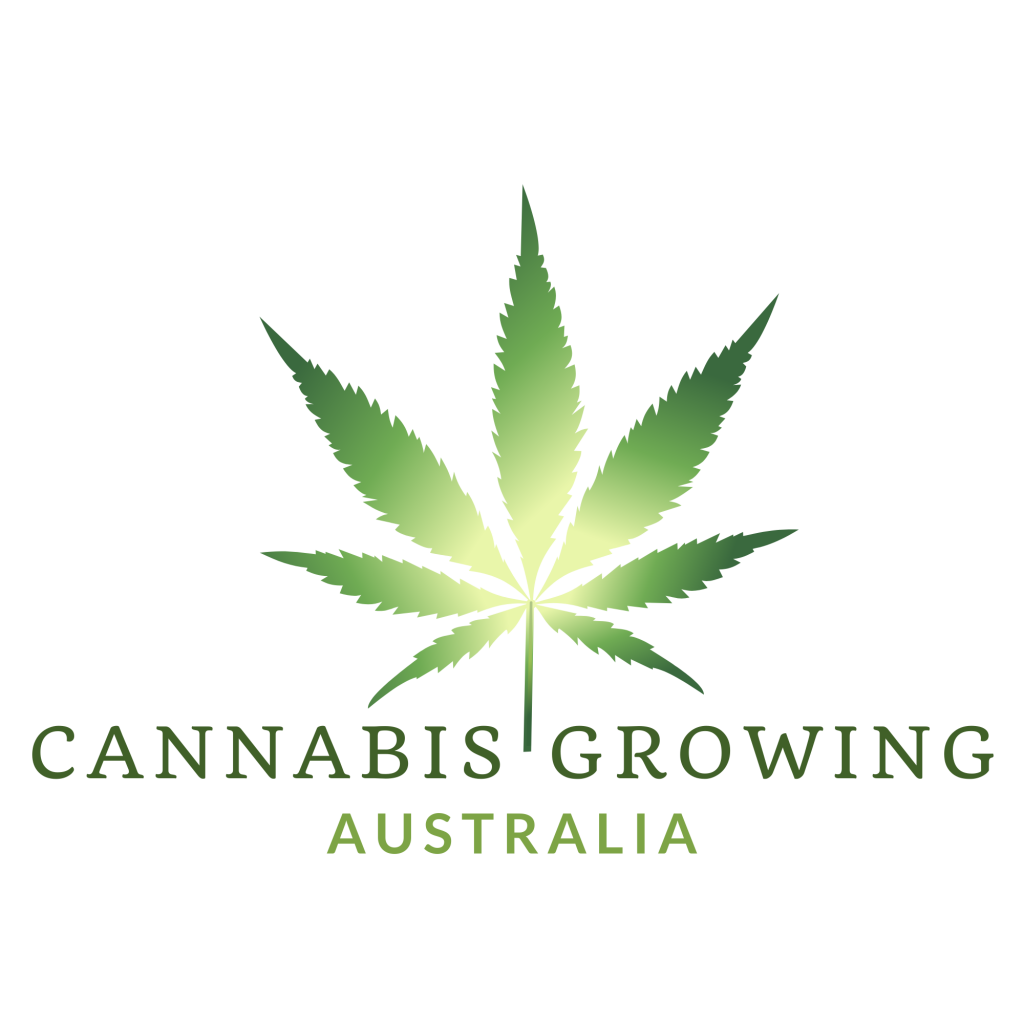
Our deep love of plants and fascination with Cannabis has enabled over 25 years of successful small scale Marijuana cultivation from indoor hydroponics, greenhouses and outdoor growing set-ups.
As Cannabis laws around the world change, *we support the movement toward freedom of choice for responsible, consenting adults who wish to experience the joy and wonder of growing a Cannabis plant.
*All info is for entertainment purposes only. We do not condone illegal growing of Cannabis. Consult your state laws accordingly.
Afghan Kush Feminized
10% Sativa, 90% Indica | THC 21% | Afghan Kush is an Indica cannabis strain originating from the renowned Hindu Kush mountain range, which stretches along the Afghan-Pakistan border. It is celebrated for its quintessential indica characteristics, producing large, resinous buds that deliver the classic body stone effect cherished by many users.
——————————————————————————
Is it legal to buy Cannabis seeds in Australia?
How can I buy Cannabis seeds in Australia?
AK-47 Feminized
Ak-47 was orginally created by the Netherland’s Serious Seeds in 1992 and has won 16 awards including the High Times Cannabis Cup. People love this strain around the world for its high THC content, strong flavour and high energy effects.
——————————————————————————
Is it legal to buy Cannabis seeds in Australia?
How can I buy Cannabis seeds in Australia?
Amnesia Haze Feminized
10% Indica – 90% Sativa | THC 21-25% | This is THE legit Dutch classic Sativa dominent powerhouse that is the proud winner of multiple Cannabis cups. This uplifter has a lemony, incense and cederwood flavour. Amnesia has a slightly longer growth phase overall, but this translates into massive yields and is well worth your attention for a truly supreme quality end product that is sure to please those aiming for a happy and uplifting high.
——————————————————————————
Is it legal to buy Cannabis seeds in Australia?
How can I buy Cannabis seeds in Australia?
Amnesia Platinum Feminized
70% Sativa, 30% Indica | THC 16 – 20% | The Original Amnesia Platinum was developed by a Dutch breeder who combined a renowned Haze female with a Northern Lights male. Due to its great success and high demand, the breeder has now released the first Original Amnesia Platinum Feminised seeds. This Sativa variety, which flowers like an Indica, grows rapidly, is highly productive and maintains a manageable height. The plants are extremely potent, boast an exceptionally sweet Haze aroma, and are covered in abundant resin crystals.
——————————————————————————
Is it legal to buy Cannabis seeds in Australia?
How can I buy Cannabis seeds in Australia?
Banana Monkey Feminized Seeds
30% Sativa, 70% Indica | THC 25-28% | Our Banana Monkey has an aroma of ripe bananas and fruity spice when you open the jar and a flavor profile that lives up to its name. Banana Monkey is tranquilizing and a bit of a creeper, as it slowly yet unrelentingly produces a deep whole-body relaxation thanks to the strong Indica influence. You’ll find your mind lifted into a state of happiness that has you feeling free of any bad moods or negative thoughts.
——————————————————————————
Is it legal to buy Cannabis seeds in Australia?
How can I buy Cannabis seeds in Australia?
Blak Domina Feminized
10% Sativa, 90% Indica | THC 20% | Black Domina is an Indica marijuana strain created by combining Northern Lights, Ortega, Hash Plant, and Afghani. This diverse blend produces deeply relaxing and sedative effects. Black Domina is known for its spicy pepper aroma and flavor, making it a popular choice among medical marijuana patients seeking relief from insomnia.
——————————————————————————
Is it legal to buy Cannabis seeds in Australia?
How can I buy Cannabis seeds in Australia?
Blue Cheese
40% Sativa, 60% Indica | THC 19% | Blue Cheese is an Indica strain created by crossing a Blueberry male with a female U.K. Cheese, a phenotype of Skunk #1. This combination results in a unique flavor profile that blends the sweet taste of berries with the savory notes of blue cheese, reminiscent of the original Cheese strain. Blue Cheese’s potent effects are perfect for unwinding after a long day, offering relief from muscle spasms, pain, and stress.
——————————————————————————
Is it legal to buy Cannabis seeds in Australia?
How can I buy Cannabis seeds in Australia?
Blue Dream
70% Sativa, 30% Indica | THC 19% | Blue Dream is a Sativa-dominant hybrid cannabis strain created by crossing Blueberry with Haze. Known for its balanced high, this strain offers both cerebral stimulation and full-body relaxation. With a THC content of 18% and low CBD levels, Blue Dream is popular among both beginners and experienced users. Its flavor profile is reminiscent of sweet berries, both in taste and aroma. Medical marijuana patients frequently choose Blue Dream to alleviate symptoms of depression, chronic pain, and nausea.
——————————————————————————
Is it legal to buy Cannabis seeds in Australia?
How can I buy Cannabis seeds in Australia?
Blueberry Feminized
70% Indica – 10% Sativa – 20% Ruderalis | THC 19-20% | This berry-tasted strain is a cross between Afghani Indica x Highland Thai Sativa x Purple Thai Sativa. This strain promotes calmness and ease and is great for combating anxiety and stress.
How can I buy Cannabis seeds in Australia?
Bruce Banner Feminized
25% Indica – 55% Sativa – 20% Ruderalis | THC 23% | This strain is followed by a cult over the years. It is loved for its distinct earthy, woody flavor with a sweet strawberry undertone. It is great for an energizing, motivational high filled with creativity and warmth. This plant is medium-sized and grows well indoors and outdoors.
——————————————————————————
Is it legal to buy Cannabis seeds in Australia?
How can I buy Cannabis seeds in Australia?
Bubblegum Feminized
80% Indica – 20% Sativa | THC 20 – 27% | This strain has large bubbly buds with a powerful high that offers great emotional and physical relief. This fruitful strain offers flavors of bubblegum, fruits, spices, bitterness, and earthiness.
——————————————————————————
Is it legal to buy Cannabis seeds in Australia?
How can I buy Cannabis seeds in Australia?
Caramel King Feminized
75% Indica – 5% Sativa | THC 20%
This exciting strain converges a cocktail of the top indica strains we all know and love today: Blue Black x Maple Leaf Indica x White Rhino. Auto Caramel King has a sweet flavor and aroma, with notes of caramel.
It is a fast hitter and has a very relaxing body-stoned effect. Brain activity will increase along with a relaxing body effect that isn’t too heavy, still allowing movement and mobility. Making this perfect for a good laugh with your friends at Saturday’s barbecue. Medicinally she is highly valued for her antidepressant and anxiolytic properties.
——————————————————————————
Is it legal to buy Cannabis seeds in Australia?
How can I buy Cannabis seeds in Australia?
CBD Cheese Feminized
60% Indica – 40% Sativa | THC 0.50% | CBD 15 – 17% | This legendary strain has an intense aroma of old cheese and an earthy, mossy taste, with hints of flowers. CBD Cheese delivers a moderately potent and long-lasting high, with a very nice sensation of well-being and happiness. Due to high CBD levels, this strain showcases many anxiolytic and anti-inflammatory properties and is great for medical use.
——————————————————————————
Is it legal to buy Cannabis seeds in Australia?
How can I buy Cannabis seeds in Australia?
CBD Gold Feminized
THC 4 – 6% | CBD 7 -10% | This strain is a medicinal Indica dominant plant that is extremely pleasant and aromatic. It provides a powerful, long-lasting body high that is perfect for relaxing.
——————————————————————————
Is it legal to buy Cannabis seeds in Australia?
How can I buy Cannabis seeds in Australia?
CBD Indica King Feminized
80% Indica – 20% Sativa | THC 0.70 – 0.90% | CBD 20 – 24% | Our CBD Indica King Strain is top-quality and best known for its potent effects and relaxing properties. This unique strain packs the right ratio of a tangy grapefruit flavor with tasty fruit cocktail aromas. When Grown and harvested with care, this CBD flower is packed with beneficial cannabinoids, terpenes, and flavonoids that work together to deliver a truly satisfying relaxing body-stoned, long-lasting experience.
——————————————————————————
Is it legal to buy Cannabis seeds in Australia?
How can I buy Cannabis seeds in Australia?
CBD White Widow Feminized
THC 4 – 6% | CBD 7 -10% | This strain is a medicinal Indica dominant plant that is extremely pleasant and aromatic. It provides a powerful, long-lasting body high that is perfect for relaxing.
——————————————————————————
Is it legal to buy Cannabis seeds in Australia?
How can I buy Cannabis seeds in Australia?
Cheese Feminized
20% Sativa, 80% Indica | THC 18-20% | Cheese is a renowned strain that originated in the United Kingdom. It is a unique female phenotype of Skunk #1, which is a hybrid of Afghani (indica), Acapulco Gold (sativa), and Columbian Gold (sativa). This strain preserves the uplifting effects of a sativa, making it popular among those dealing with stress and anxiety. Its potent body relaxation helps alleviate chronic pain and is beneficial for treating insomnia. Additionally, Cheese is frequently used to stimulate appetite.
——————————————————————————
Is it legal to buy Cannabis seeds in Australia?
How can I buy Cannabis seeds in Australia?
Chronical Feminized
60% Sativa, 40% Indica | THC 19-25% | This strain is known for its impressive yields, thanks to its robust hybrid genetics—a blend of Northern Lights, Skunk x Northern Lights, and AK-47. With a medium height and a less branchy structure, it’s not ideal for topping or super cropping. However, it excels in a Sea of Green setup, allowing growers to concentrate on the main colas and maximize plant density in limited space. Chronical delivers astonishing yields, but proper curing is essential to preserve its delightful sweet aroma.
——————————————————————————
Is it legal to buy Cannabis seeds in Australia?
How can I buy Cannabis seeds in Australia?
Cocopopo Feminized
5% Indica – 75% Sativa – 20% Ruderalis | THC 20 – 25% | This exciting genetic combination is birthed from O.G. Chocolate x Cannalope Haze. It is easy to grow and takes less effort to maintain than other strains. Enjoy the sweet, bitter chocolate taste with Cocopopo.
——————————————————————————
Is it legal to buy Cannabis seeds in Australia?
How can I buy Cannabis seeds in Australia?
Coffee Rocket Feminized
70% Sativa, 30% Indica | THC 25-28% | Coffee Rocket has an earthy, yet sweet flavor and a nice citrusy aroma with a hint of grape. It has high THC. The wonderful Coffee Rocket strain has rapid effects but will provide nice relaxation of the muscles and creative energy along with slight euphoria. Coffee Rocket is versatile and can be smoked day or night.
——————————————————————————
Is it legal to buy Cannabis seeds in Australia?
How can I buy Cannabis seeds in Australia?
Dosidos Rocketos Feminized
30% Sativa, 70% Indica | THC 26 – 32% | Introducing your new green companion! This Indica-dominant strain is packed with THC and boasts an incredible taste and aroma. It’s versatile, thriving indoors with the Screen of Green technique or Super Cropping, and flourishing outdoors in sunlight. Plus, it’s resilient enough to withstand colder climates. Enjoy legendary potency and unique effects with this exceptional all-round variety!
——————————————————————————
Is it legal to buy Cannabis seeds in Australia?
How can I buy Cannabis seeds in Australia?
Dubai Poison Feminized
100% Sativa | THC 8-20% Dubai Poison has a really complex flavor and aroma, with notes of lemon and spices. The effect it provides is potent, clear, and cerebral. This legendary strain has gained popularity worldwide for it’s energetic, uplifting effects. Durban is the perfect strain to help you stay productive through a busy day when exploring the outdoors, or to help you get creative.
——————————————————————————
Is it legal to buy Cannabis seeds in Australia?
How can I buy Cannabis seeds in Australia?
Early Top Skunk Feminized
35% Sativa, 65% Indica | THC 15 – 20% | Feminised Early Top Skunk seeds combine Skunk #1 and Early Pearl, creating hardy outdoor plants with dense, resin-coated buds. Early Pearl makes these plants mold-resistant and triggers early flowering from late July to late September. Skunk #1 ensures a high-quality yield. Ideal for all growers, this strain is reliable, easy to grow, and consistently produces top-grade cannabis.
——————————————————————————
Is it legal to buy Cannabis seeds in Australia?
How can I buy Cannabis seeds in Australia?
Euforia Special Feminized
30% Sativa | 70% Indica | THC 18 – 20% | Euforia Special blooms with heavy flowers on long branches with short internodes. During the vegetative stage, some plants may resemble Haze varieties, but their Indica traits become prominent once flowering begins. The plants are robust and have earned a lasting reputation among dedicated growers worldwide.
——————————————————————————
Is it legal to buy Cannabis seeds in Australia?
How can I buy Cannabis seeds in Australia?
Gelato Feminized
70% Indica – 30% Sativa | THC 21-27% | This strain is an absoluate corker! One of the nicests strains going around in our opinion and very under rated. Super strong, Very crystally large(ish) buds with very big yields. It’s fairly straight forward to grow and super strong.
——————————————————————————
Is it legal to buy Cannabis seeds in Australia?
How can I buy Cannabis seeds in Australia?
Godfather OG Feminized
40% Sativa | 60% Indica | THC 19% | Godfather OG, also known as “Godfather,” “The Don of All OG’s,” and “OG Godfather,” is a powerful indica strain created by crossing XXX OG and Alpha OG. This strain delivers sedating and relaxing effects, making it ideal for medical marijuana patients seeking relief from insomnia and pain.
Flavor Profile Godfather OG has a spicy and kushy flavor with subtle grape undertones.
THC Levels and Usage With high THC levels around 28%, consumers with low THC tolerance should only use Godfather OG in small doses.
——————————————————————————
Is it legal to buy Cannabis seeds in Australia?
How can I buy Cannabis seeds in Australia?
Gorilla Glue Feminized
50% Indica – 50% Sativa | THC 20-26% | One of the strongest cannabis strains available this one is recommended for the serious marijuana consumer! This popular strain has also won several cannabis awards like the Michigan and Los Angeles Cannabis Cups in 2014, and the High Times Jamaican World Cup.
——————————————————————————
Is it legal to buy Cannabis seeds in Australia?
How can I buy Cannabis seeds in Australia?
Granddaddy Purple Feminized
25% Sativa | 75% Indica | THC 17% | Granddaddy Purple, also known as “Grand Daddy Purp,” “Granddaddy Purps,” “GDP,” and “Grandaddy Purple Kush,” is an indica strain popularized in 2003 by Ken Estes. A cross of Mendo Purps, Skunk, and Afghanistan, it boasts a complex grape and berry aroma from its Mendo Purps and Afghanistan parents and a compact bud structure from Skunk. Its deep purple flowers are coated in white crystal resin. GDP delivers strong mind and body effects, combining cerebral euphoria with physical relaxation. It’s often used to relieve pain, stress, insomnia, appetite loss, and muscle spasms. GDP yields large harvests, ready in about 60 days indoors.
——————————————————————————
Is it legal to buy Cannabis seeds in Australia?
How can I buy Cannabis seeds in Australia?
Grapefruit Feminized
20% Indica – 80% Sativa | THC 16-20%
The Vancouver, Canada staple…. This 80% Sativa strain has a sweet and fruity aroma similar to the smell of ripe grapefruit It’s an 80’s old secret mix of Cinderalla 99 with a mystical grapefruit flavoured Sativa.
With the smell of pineapple and grapefuit this has an uplifting & stimulating high good for focus, creativity and pleasure.
——————————————————————————
Is it legal to buy Cannabis seeds in Australia?
How can I buy Cannabis seeds in Australia?
Green Candy Feminized
40% Indica – 60% Sativa | THC 20-24% | Green Candy has an intensely fruity aroma and flavor, with notes of mango, pineapple, exotic wood, and incense. The effect is stimulating, focused, and energizing, providing a cerebrally powerful Sativa-like high. Only a few puffs of this potent beauty will allow your stress and anxiety to melt away along with waves of euphoria.

